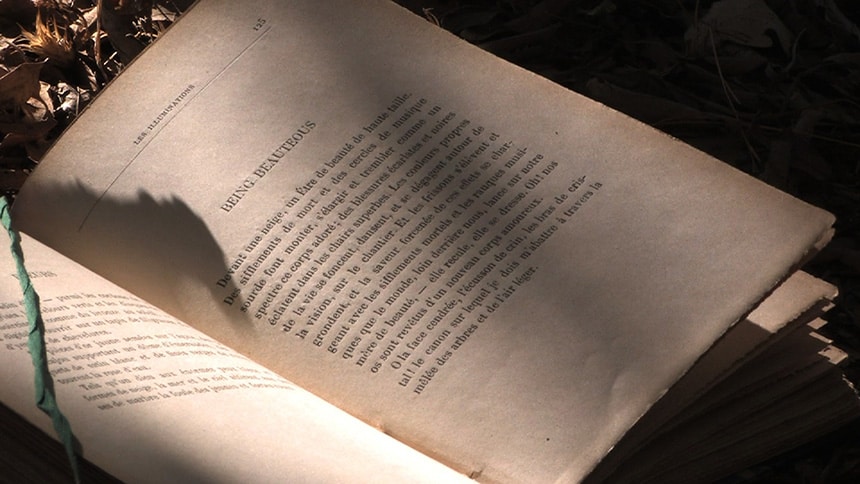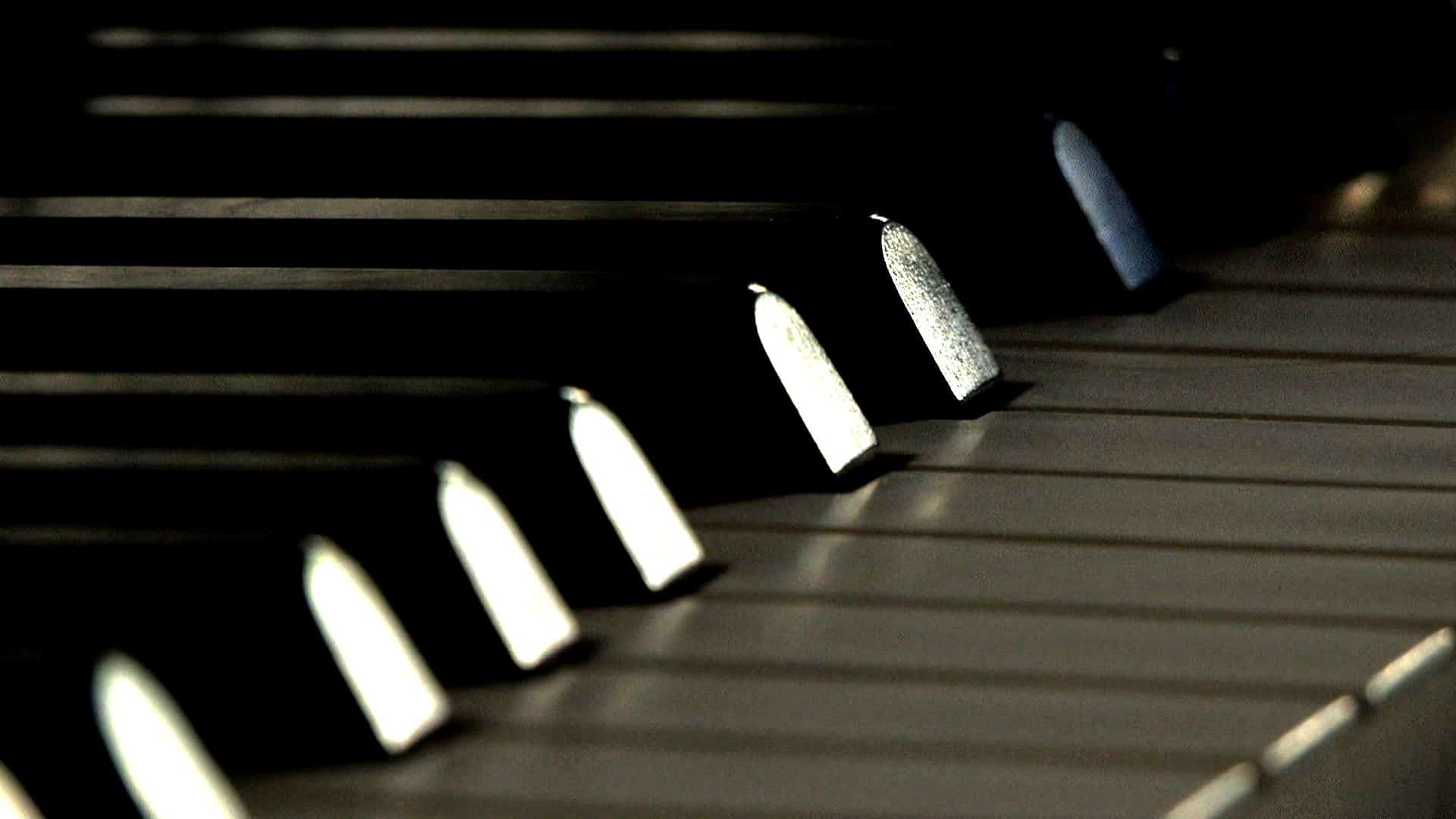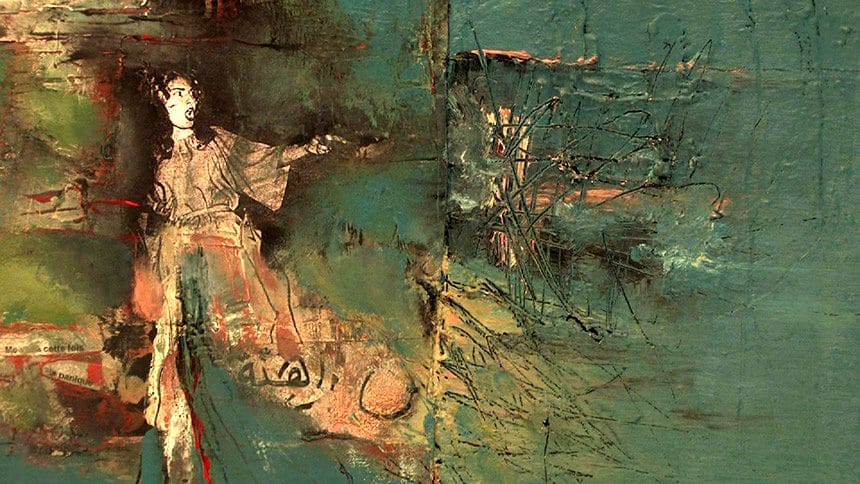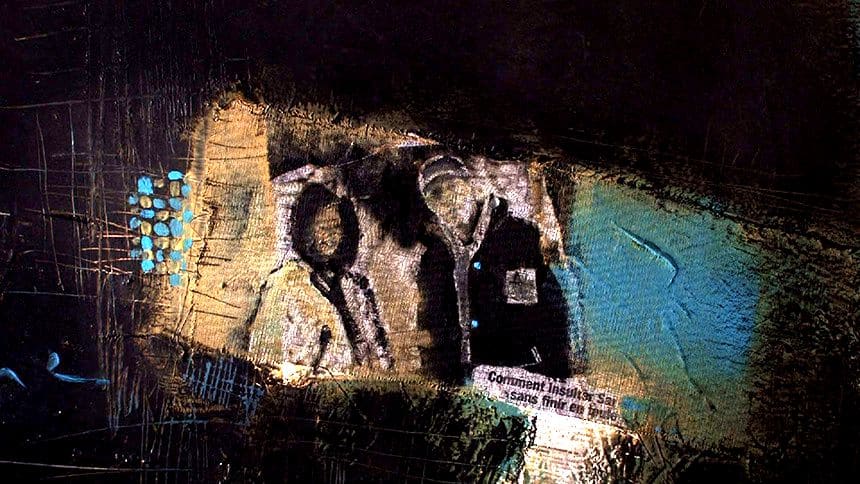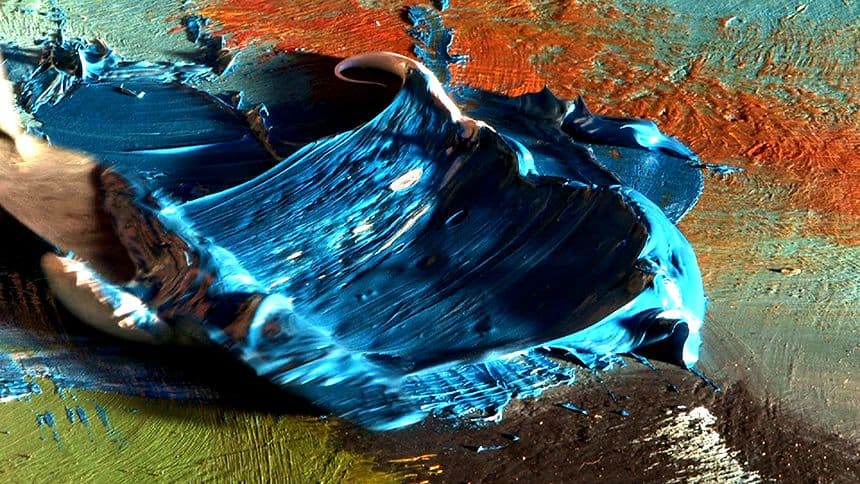Being Beauteous is not a film about painting, it is a film about a painter. Transferring my paintings onto a cinematic canvas also requires putting the pictorial work present in the film into sound, without falling into a superficial illustration. Painting is an art in itself and it should not be diverted from its purpose. Hence, it was a question of going in a direction that touches the intimacy of artistic creation. If the camera tends to distort the work (slight chromatic differences, reduced textures and reliefs of the canvases, other variable scale depending on the broadcaster), then the sound offers a limitless exploration (or almost).
◊◊◊
The first part of the film, Sentimental Education, traces the years of learning. Those years were characterized by the dominant presence of music, and the nostalgic atmosphere of this return to the past is whispered through the images and words sublimated by Poulenc’s third Novelette performed by a pianist friend. Then we hear one of the Wesendonck lieder (songs), an expression of eternal thwarted love desire, followed by Schumann’s song Die Lotosblume, a song surpassing all expressions of language. Music mixed with literature, that is the basis of my plastic expression.
◊◊◊
The second part, entitled The Wall, brings into play a philosophical question. What should we be and what should we do, facing the world? There intervenes, as far from fashions and consensus as it may seem, the invigorating brilliance of a Beretta group rap clip.
◊◊◊
In the third part of the film, Methods of combat, it is about attacking what hurts. Painting, over and over again. The sounds of the friend Dandrel were in correspondence with what was happening in the studio. As for Schumann’s lied (song), Mit Myrten und Rosen, Lieblich und hold (With myrtles and roses, lovely and sweet), it expresses the jubilation of the act of painting.
